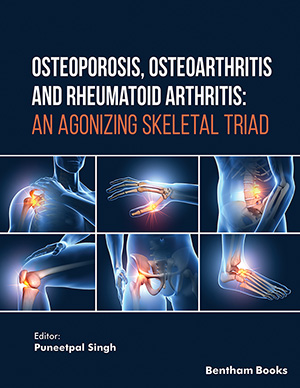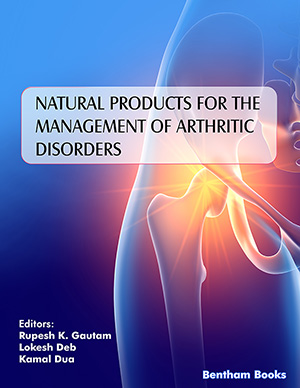Abstract
Systemic Sclerosis (SSc) is a systemic autoimmune disease of unknown etiology with a highly complex pathogenesis that despite extensive investigation is not completely understood. The clinical and pathologic manifestations of the disease result from three distinct processes: 1) Severe and frequently progressive tissue fibrosis causing exaggerated and deleterious accumulation of interstitial collagens and other extracellular matrix molecules in the skin and various internal organs; 2) extensive fibroproliferative vascular lesions affecting small arteries and arterioles causing tissue ischemic alterations; and 3) cellular and humoral immunity abnormalities with the production of numerous autoantibodies, some with very high specificity for SSc. The fibrotic process in SSc is one of the main causes of disability and high mortality of the disease. Owing to its essentially universal presence and the severity of its clinical effects, the mechanisms involved in the development and progression of tissue fibrosis have been extensively investigated, however, despite intensive investigation, the precise molecular mechanisms have not been fully elucidated. Several recent studies have suggested that cellular transdifferentiation resulting in the phenotypic conversion of various cell types into activated myofibroblasts may be one important mechanism. Here, we review the potential role that cellular transdifferentiation may play in the development of severe and often progressive tissue fibrosis in SSc.
Keywords: Systemic sclerosis, scleroderma, myofibroblasts, cellular transdifferentiation, growth factors, cytokines.
[http://dx.doi.org/10.1172/JCI31139] [PMID: 17332883]
[http://dx.doi.org/10.1056/NEJMra0806188] [PMID: 19420368]
[http://dx.doi.org/10.1038/nrdp.2015.2] [PMID: 27189141]
[http://dx.doi.org/10.1016/S0140-6736(17)30933-9] [PMID: 28413064]
[http://dx.doi.org/10.7326/0003-4819-140-1-200401060-00010] [PMID: 14706971]
[http://dx.doi.org/10.1093/rheumatology/ken481] [PMID: 19487220]
[http://dx.doi.org/10.1146/annurev-pathol-011110-130312] [PMID: 21090968]
[http://dx.doi.org/10.1016/j.rdc.2015.04.002] [PMID: 26210124]
[http://dx.doi.org/10.1080/1744666X.2019.1614915] [PMID: 31046487]
[http://dx.doi.org/10.1007/s12016-021-08889-8] [PMID: 34487318]
[http://dx.doi.org/10.1186/ar2188] [PMID: 17767742]
[http://dx.doi.org/10.1007/s11926-007-0008-z] [PMID: 17502044]
[http://dx.doi.org/10.1016/j.ajpath.2012.02.004] [PMID: 22387320]
[http://dx.doi.org/10.3389/fimmu.2018.02452] [PMID: 30483246]
[http://dx.doi.org/10.2174/0929867328666210325102749] [PMID: 33823766]
[http://dx.doi.org/10.1074/jbc.270.7.3423] [PMID: 7852429]
[http://dx.doi.org/10.1007/BF02147594] [PMID: 5132594]
[http://dx.doi.org/10.1126/science.173.3996.548] [PMID: 4327529]
[http://dx.doi.org/10.1097/00000478-197912000-00006] [PMID: 534390]
[PMID: 7015359]
[http://dx.doi.org/10.1172/JCI107827] [PMID: 4430718]
[PMID: 351108]
[http://dx.doi.org/10.3109/03009748409100391] [PMID: 6484539]
[http://dx.doi.org/10.1097/BOR.0000000000000217] [PMID: 26352735]
[http://dx.doi.org/10.5152/eurjrheum.2019.19081] [PMID: 31922472]
[http://dx.doi.org/10.1016/j.jid.2017.09.045] [PMID: 29080679]
[http://dx.doi.org/10.1038/s41467-021-24607-6] [PMID: 34282151]
[http://dx.doi.org/10.1159/000147748] [PMID: 8714286]
[http://dx.doi.org/10.1016/0272-6386(95)90610-X] [PMID: 7573028]
[http://dx.doi.org/10.1016/j.cell.2009.11.007] [PMID: 19945376]
[http://dx.doi.org/10.1172/JCI0215518] [PMID: 12163453]
[http://dx.doi.org/10.1172/JCI200320530] [PMID: 14679171]
[http://dx.doi.org/10.1172/JCI39104] [PMID: 19487818]
[http://dx.doi.org/10.1016/j.humpath.2009.02.020] [PMID: 19695676]
[http://dx.doi.org/10.1146/annurev-cellbio-092910-154036] [PMID: 21740232]
[http://dx.doi.org/10.1161/01.RES.0000141146.95728.da] [PMID: 15345668]
[http://dx.doi.org/10.1080/10623320500227283] [PMID: 16162442]
[http://dx.doi.org/10.1161/CIRCRESAHA.119.314813] [PMID: 30973806]
[http://dx.doi.org/10.1016/j.mehy.2006.07.053] [PMID: 17045756]
[http://dx.doi.org/10.1016/j.ajpath.2011.06.001] [PMID: 21763673]
[http://dx.doi.org/10.1152/physrev.00021.2018] [PMID: 30864875]
[http://dx.doi.org/10.1016/j.semcdb.2019.10.015] [PMID: 31791693]
[http://dx.doi.org/10.1186/s41232-021-00186-3] [PMID: 35130955]
[http://dx.doi.org/10.1016/j.autrev.2017.05.024] [PMID: 28572048]
[http://dx.doi.org/10.1136/annrheumdis-2016-210229] [PMID: 28062404]
[http://dx.doi.org/10.3390/life11070610] [PMID: 34202703]
[http://dx.doi.org/10.1111/cei.13599] [PMID: 33772754]
[http://dx.doi.org/10.3899/jrheum.150088] [PMID: 26276964]
[http://dx.doi.org/10.1126/science.171.3975.1019] [PMID: 5100788]
[http://dx.doi.org/10.1016/j.cmet.2013.06.016] [PMID: 23954640]
[http://dx.doi.org/10.1016/j.ajpath.2015.06.005] [PMID: 26261086]
[http://dx.doi.org/10.3390/jcm8081256] [PMID: 31430950]
[http://dx.doi.org/10.1097/BOR.0000000000000838] [PMID: 34534166]
[http://dx.doi.org/10.1002/art.38990] [PMID: 25504959]
[http://dx.doi.org/10.1146/annurev.physiol.59.1.43] [PMID: 9074756]
[http://dx.doi.org/10.1152/ajplung.00379.2006] [PMID: 17085519]
[http://dx.doi.org/10.1007/BF03403533] [PMID: 8790603]
[http://dx.doi.org/10.4049/jimmunol.160.1.419] [PMID: 9551999]
[http://dx.doi.org/10.1007/s11926-000-0027-5] [PMID: 11123104]
[http://dx.doi.org/10.1007/s11926-006-0055-x] [PMID: 16569374]
[http://dx.doi.org/10.3389/fimmu.2021.784401] [PMID: 34975874]
[http://dx.doi.org/10.1007/s00296-019-04315-7] [PMID: 31056725]
[http://dx.doi.org/10.1016/j.jaci.2015.08.043] [PMID: 26602164]
[http://dx.doi.org/10.1186/s13075-021-02555-2] [PMID: 34344444]
[http://dx.doi.org/10.1371/journal.pone.0033508] [PMID: 22432031]
[http://dx.doi.org/10.1186/ar1790] [PMID: 16207328]
[http://dx.doi.org/10.1016/j.jbspin.2016.06.002] [PMID: 27452296]
[http://dx.doi.org/10.1083/jcb.200601018] [PMID: 16567498]
[http://dx.doi.org/10.1016/B978-0-12-394305-7.00004-5] [PMID: 22364874]
[http://dx.doi.org/10.1186/s12943-016-0502-x] [PMID: 26905733]
[http://dx.doi.org/10.1016/j.tig.2017.08.004] [PMID: 28919019]
[PMID: 12455866]
[http://dx.doi.org/10.1002/art.10413] [PMID: 12124852]
[http://dx.doi.org/10.1038/nrrheum.2014.137] [PMID: 25136781]
[http://dx.doi.org/10.1016/j.matbio.2017.12.016] [PMID: 29355590]
[http://dx.doi.org/10.1084/jem.20190103] [PMID: 32997468]
[http://dx.doi.org/10.1002/path.5680] [PMID: 33834494]
[http://dx.doi.org/10.1016/j.semcancer.2012.04.002] [PMID: 22548724]
[http://dx.doi.org/10.1038/nrm3758] [PMID: 24556840]
[http://dx.doi.org/10.4161/19336918.2014.983794] [PMID: 25482613]
[http://dx.doi.org/10.1126/scisignal.2005304] [PMID: 25270257]
[http://dx.doi.org/10.1038/sj.onc.1208927] [PMID: 16123809]
[http://dx.doi.org/10.1016/j.semcancer.2012.05.003] [PMID: 22613485]
[http://dx.doi.org/10.4161/cc.10.24.18552] [PMID: 22134354]
[http://dx.doi.org/10.1158/0008-5472.CAN-08-1942] [PMID: 18829540]
[http://dx.doi.org/10.1091/mbc.e11-02-0103] [PMID: 21411626]
[http://dx.doi.org/10.1074/jbc.M211304200] [PMID: 12665527]
[http://dx.doi.org/10.1371/journal.pone.0126015] [PMID: 25955164]
[http://dx.doi.org/10.1002/jcp.30705] [PMID: 35224740]
[http://dx.doi.org/10.1038/srep26226] [PMID: 27194451]
[http://dx.doi.org/10.3390/jcm10245820] [PMID: 34945116]
[http://dx.doi.org/10.1038/jid.2014.253] [PMID: 24933320]
[http://dx.doi.org/10.3389/fimmu.2020.00648] [PMID: 32477322]
[http://dx.doi.org/10.1038/jid.2010.120] [PMID: 20445556]
[http://dx.doi.org/10.1016/j.diff.2015.10.002] [PMID: 26525508]
[http://dx.doi.org/10.1371/journal.pone.0256812] [PMID: 34762649]
[http://dx.doi.org/10.1016/j.abb.2014.12.007] [PMID: 25524739]
[http://dx.doi.org/10.1016/j.biopha.2022.112972] [PMID: 35447551]
[http://dx.doi.org/10.3390/ijms23126613] [PMID: 35743055]
[http://dx.doi.org/10.1002/art.30317] [PMID: 21425122]
[http://dx.doi.org/10.1016/j.matbio.2016.01.012] [PMID: 26807760]
[http://dx.doi.org/10.1007/s00441-011-1222-6] [PMID: 21866313]
[http://dx.doi.org/10.3389/fcell.2020.00260] [PMID: 32373613]
[http://dx.doi.org/10.1242/jcs.028282] [PMID: 18796538]
[http://dx.doi.org/10.1042/BJ20101500] [PMID: 21585337]
[http://dx.doi.org/10.1016/j.imbio.2012.05.026] [PMID: 22739237]
[http://dx.doi.org/10.1002/jcp.27583] [PMID: 30378114]
[http://dx.doi.org/10.1038/s41419-019-2101-4] [PMID: 31776330]
[http://dx.doi.org/10.1016/j.jid.2017.12.004] [PMID: 29248546]
[http://dx.doi.org/10.1111/cpr.12629] [PMID: 31468648]
[http://dx.doi.org/10.1111/gtc.12323] [PMID: 26663584]
[http://dx.doi.org/10.1139/cjpp-2016-0634] [PMID: 28686848]
[http://dx.doi.org/10.1073/pnas.1913481117] [PMID: 32034099]
[http://dx.doi.org/10.1038/s41467-021-22717-9] [PMID: 33963183]
[http://dx.doi.org/10.1093/nar/gkac652] [PMID: 35904801]
[http://dx.doi.org/10.1016/S1359-6101(97)00010-5] [PMID: 9462483]
[http://dx.doi.org/10.1139/o03-069] [PMID: 14663501]
[http://dx.doi.org/10.1016/j.matbio.2007.06.003] [PMID: 17681742]
[http://dx.doi.org/10.1046/j.0022-202X.2003.22133.x] [PMID: 14962082]
[http://dx.doi.org/10.1111/1523-1747.ep12318465] [PMID: 7636314]
[PMID: 10648031]
[http://dx.doi.org/10.1152/ajplung.00530.2007] [PMID: 18676875]
[http://dx.doi.org/10.1098/rstb.1990.0051] [PMID: 1969656]
[http://dx.doi.org/10.1093/rheumatology/ken265] [PMID: 18784131]
[http://dx.doi.org/10.1084/jem.175.5.1227] [PMID: 1314885]
[http://dx.doi.org/10.1056/NEJMoa052955] [PMID: 16790699]
[http://dx.doi.org/10.1016/j.autrev.2007.02.020] [PMID: 18035321]
[http://dx.doi.org/10.3390/ijms23073904] [PMID: 35409263]
[http://dx.doi.org/10.1371/journal.pone.0060414] [PMID: 23577108]
[http://dx.doi.org/10.1002/jcp.1041330405] [PMID: 2824530]
[http://dx.doi.org/10.1016/0955-2235(89)90012-4] [PMID: 2491263]
[http://dx.doi.org/10.1002/path.4768] [PMID: 27425145]
[http://dx.doi.org/10.1126/scisignal.2005504] [PMID: 25249657]
[http://dx.doi.org/10.5070/D36S6582VR] [PMID: 16638370]
[http://dx.doi.org/10.1126/scitranslmed.aaz5506] [PMID: 32998972]
[http://dx.doi.org/10.1016/0006-291X(89)92678-8] [PMID: 2735925]
[http://dx.doi.org/10.1073/pnas.86.19.7311] [PMID: 2798412]
[PMID: 12858453]
[http://dx.doi.org/10.1161/01.RES.0000134644.89917.96] [PMID: 15178641]
[http://dx.doi.org/10.2174/1573397114666180809121005] [PMID: 30091416]
[http://dx.doi.org/10.1146/annurev.ph.55.030193.001023] [PMID: 8466170]
[http://dx.doi.org/10.3899/jrheum.080340] [PMID: 19004037]
[http://dx.doi.org/10.2353/ajpath.2008.071021] [PMID: 18467708]
[http://dx.doi.org/10.1371/journal.pone.0225422] [PMID: 31765403]
[http://dx.doi.org/10.1161/ATVBAHA.112.300504] [PMID: 23104848]
[http://dx.doi.org/10.1016/j.cytogfr.2016.09.002] [PMID: 27692608]
[http://dx.doi.org/10.1146/annurev.immunol.021908.132612] [PMID: 19302047]
[http://dx.doi.org/10.1038/s41584-019-0277-8] [PMID: 31515542]
[http://dx.doi.org/10.1016/j.ajpath.2011.07.042] [PMID: 21945322]
[http://dx.doi.org/10.1097/MIB.0b013e318281f37a] [PMID: 23635716]
[http://dx.doi.org/10.1093/ecco-jcc/jjy201] [PMID: 30520951]
[http://dx.doi.org/10.1136/ard.2009.121400] [PMID: 20472592]
[http://dx.doi.org/10.3389/fimmu.2013.00266] [PMID: 24046769]
[http://dx.doi.org/10.1002/art.37742] [PMID: 23055137]
[http://dx.doi.org/10.1016/j.cyto.2018.12.018] [PMID: 30685202]
[http://dx.doi.org/10.1002/jcp.24337] [PMID: 23359533]
[http://dx.doi.org/10.1097/BOR.0000000000000907] [PMID: 36125916]
[http://dx.doi.org/10.1073/pnas.72.9.3666] [PMID: 1103152]
[http://dx.doi.org/10.1016/0022-4804(91)90146-D] [PMID: 1661798]
[http://dx.doi.org/10.1146/annurev.med.45.1.491] [PMID: 8198398]
[http://dx.doi.org/10.1002/path.2287] [PMID: 18161752]
[PMID: 12825458]
[http://dx.doi.org/10.1007/s00281-006-0012-9] [PMID: 16738952]
[http://dx.doi.org/10.1111/cas.14455] [PMID: 32385953]
[http://dx.doi.org/10.1371/journal.pone.0232356] [PMID: 32357159]
[http://dx.doi.org/10.1038/319154a0] [PMID: 3079885]
[http://dx.doi.org/10.1016/0092-8674(86)90346-6] [PMID: 3091258]
[http://dx.doi.org/10.1146/annurev.immunol.14.1.649] [PMID: 8717528]
[http://dx.doi.org/10.1056/NEJM199704103361506] [PMID: 9091804]
[http://dx.doi.org/10.1038/sj.onc.1203239] [PMID: 10602461]
[http://dx.doi.org/10.2174/1566524013363816] [PMID: 11899077]
[http://dx.doi.org/10.1007/s00109-004-0555-y] [PMID: 15175863]
[http://dx.doi.org/10.1016/0190-9622(93)70014-K] [PMID: 8425975]
[http://dx.doi.org/10.1002/1529-0131(200111)44:11<2653::AID-ART445>3.0.CO;2-1] [PMID: 11710721]
[http://dx.doi.org/10.1007/s00281-008-0125-4] [PMID: 18548250]
[http://dx.doi.org/10.3899/jrheum.100398] [PMID: 20843906]
[http://dx.doi.org/10.1016/j.freeradbiomed.2018.04.554] [PMID: 29694853]
[http://dx.doi.org/10.1007/s11926-014-0473-0] [PMID: 25475596]
[http://dx.doi.org/10.3390/jcm10204791] [PMID: 34682914]
[http://dx.doi.org/10.3390/ijms23042062] [PMID: 35216178]
[http://dx.doi.org/10.1371/journal.pone.0263369] [PMID: 35231032]
[http://dx.doi.org/10.1243/0954411981533854] [PMID: 9611999]
[http://dx.doi.org/10.1016/S0091-679X(10)98008-4] [PMID: 20816235]
[http://dx.doi.org/10.1016/j.yexcr.2019.03.027] [PMID: 30910400]
[http://dx.doi.org/10.1016/B978-0-12-386015-6.00039-1] [PMID: 22127254]
[http://dx.doi.org/10.1101/cshperspect.a041231] [PMID: 36123034]
[http://dx.doi.org/10.1097/00005344-198900135-00002] [PMID: 2473280]
[http://dx.doi.org/10.1007/s00018-010-0518-0] [PMID: 20848158]
[http://dx.doi.org/10.1016/0024-3205(89)90415-3] [PMID: 2685485]
[http://dx.doi.org/10.1155/2013/125632] [PMID: 23984086]
[http://dx.doi.org/10.4103/2229-5178.93484] [PMID: 23130253]
[http://dx.doi.org/10.1016/j.phrs.2011.03.003] [PMID: 21419223]
[http://dx.doi.org/10.3899/jrheum.081030] [PMID: 19369451]
[http://dx.doi.org/10.1074/jbc.M311430200] [PMID: 15044479]
[http://dx.doi.org/10.2174/157016105774329480] [PMID: 16248781]
[http://dx.doi.org/10.1165/rcmb.2006-0353OC] [PMID: 17379848]
[http://dx.doi.org/10.1371/journal.pone.0161988] [PMID: 27583804]
[http://dx.doi.org/10.1016/0092-8674(82)90409-3] [PMID: 6297757]
[http://dx.doi.org/10.1016/0092-8674(91)90633-A] [PMID: 1846319]
[http://dx.doi.org/10.1016/0092-8674(92)90630-U] [PMID: 1617723]
[http://dx.doi.org/10.1038/nrm3470] [PMID: 23151663]
[http://dx.doi.org/10.1136/annrheumdis-2011-200568] [PMID: 22328737]
[http://dx.doi.org/10.1038/ncomms1734] [PMID: 22415826]
[http://dx.doi.org/10.1002/art.34424] [PMID: 22328118]
[http://dx.doi.org/10.1007/s10067-018-4322-9] [PMID: 30291470]
[http://dx.doi.org/10.1111/exd.12255] [PMID: 24118232]
[http://dx.doi.org/10.1038/s41598-018-28968-9] [PMID: 30206265]
[http://dx.doi.org/10.3389/fphar.2022.1038073] [PMID: 36408221]
[http://dx.doi.org/10.1016/j.cell.2012.05.012] [PMID: 22682243]
[http://dx.doi.org/10.1186/s12929-021-00732-8] [PMID: 33966637]
[http://dx.doi.org/10.1161/01.RES.0000124300.76171.C9] [PMID: 14988227]
[http://dx.doi.org/10.1080/1744666X.2021.2000391] [PMID: 34719325]
[http://dx.doi.org/10.1002/art.34444] [PMID: 22354771]
[http://dx.doi.org/10.1016/j.jid.2022.08.052] [PMID: 36116512]
[http://dx.doi.org/10.1038/s41584-021-00683-2] [PMID: 34480165]
[http://dx.doi.org/10.3390/biomedicines9101471] [PMID: 34680587]
[http://dx.doi.org/10.3389/fimmu.2022.856036] [PMID: 35464474]
[http://dx.doi.org/10.1042/BST0361224] [PMID: 19021530]
[http://dx.doi.org/10.1016/j.cell.2007.12.024] [PMID: 18191211]
[http://dx.doi.org/10.1146/annurev-biochem-060308-103103] [PMID: 20533884]
[http://dx.doi.org/10.4161/rna.8.5.16154] [PMID: 21712654]
[http://dx.doi.org/10.1084/jem.20100035] [PMID: 20643828]
[http://dx.doi.org/10.1007/s10157-023-02329-x] [PMID: 36808381]
[http://dx.doi.org/10.3389/fphys.2022.895242] [PMID: 35795649]
[http://dx.doi.org/10.1016/j.cellsig.2011.12.024] [PMID: 22245495]
[PMID: 26729221]
[http://dx.doi.org/10.1186/s13223-019-0345-2] [PMID: 31139230]
[http://dx.doi.org/10.1111/jcmm.15221] [PMID: 32243691]
[http://dx.doi.org/10.1007/s00018-023-04699-7] [PMID: 36694058]
[http://dx.doi.org/10.1016/j.bcp.2020.114172] [PMID: 32712053]
[http://dx.doi.org/10.3390/ijms24065811] [PMID: 36982885]
[http://dx.doi.org/10.3390/ijms231810731] [PMID: 36142646]
[http://dx.doi.org/10.1177/11772719221135442] [PMID: 36518749]
[http://dx.doi.org/10.1038/s41598-022-23723-7] [PMID: 36344812]
[http://dx.doi.org/10.1038/mt.2016.41] [PMID: 26898221]
[http://dx.doi.org/10.1093/cvr/cvaa008] [PMID: 31990292]
[http://dx.doi.org/10.3892/mmr.2022.12762] [PMID: 35656895]












